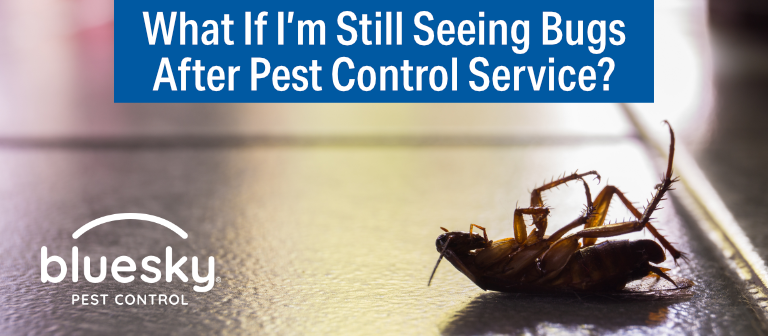The 5-Second Trick For Eco Bed Bug Exterminators Dc
Wiki Article
Eco Bed Bug Exterminators Dc for Beginners
Table of ContentsEco Bed Bug Exterminators Dc Fundamentals ExplainedThe Basic Principles Of Eco Bed Bug Exterminators Dc The Eco Bed Bug Exterminators Dc Diaries6 Easy Facts About Eco Bed Bug Exterminators Dc ExplainedSome Known Questions About Eco Bed Bug Exterminators Dc.
Because pesticides are poisonous, they are additionally possibly dangerous to humans, animals, various other organisms, and the atmosphere. Consequently, individuals who use pesticides or regularly been available in call with them must comprehend the relative toxicity, prospective health results, and preventative procedures to decrease direct exposure to the products they use. Risk, or risk, of utilizing chemicals is the capacity for injury, or the degree of risk associated with utilizing a pesticide under a given set of conditions.
Nevertheless, applicators can lessen or virtually get rid of exposure-- and hence minimize hazard-- by adhering to the label guidelines, making use of personal safety garments and equipment (PPE), and handling the pesticide properly. For instance, greater than 95 percent of all chemical direct exposures originate from facial exposure, mainly to the hands and lower arms. By wearing a pair of unlined, chemical-resistant handwear covers, this sort of exposure can be nearly gotten rid of.
The harmful effects that occur from a single direct exposure by any kind of course of entry are termed "intense impacts." The 4 paths of exposure are facial (skin), breathing (lungs), oral (mouth), and the eyes. Severe poisoning is determined by checking out the dermal toxicity, breathing toxicity, and oral toxicity of guinea pig.
Some Known Incorrect Statements About Eco Bed Bug Exterminators Dc
Acute poisoning is determined as the quantity or focus of a toxicant-- the a.i.-- needed to kill 50 percent of the animals in a test population. This step is normally revealed as the LD50 (lethal dosage 50) or the LC50 (lethal focus 50). In addition, the LD50 and LC50 values are based upon a single dosage and are videotaped in milligrams of chemical per kg of body weight (mg/kg) of the examination pet or partly per million (ppm).The lower the LD50 or LC50 value of a chemical item, the better its poisoning to human beings and pets. Chemicals with a high LD50 are the least toxic to human beings if utilized according to the directions on the item tag. The persistent poisoning of a chemical is established by subjecting examination animals to long-lasting exposure to the energetic component.
The chronic toxicity of a pesticide is harder than intense toxicity to establish with lab analysis. Products are categorized on the basis of their loved one acute poisoning (their LD50 or LC50 values). Chemicals that are classified as very hazardous (Poisoning Category I) on the basis of either oral, facial, or inhalation poisoning have to have the signal words DANGER and POISON published in red with a skull and crossbones sign plainly displayed on the front panel of the bundle label.
The acute (single dose) dental LD50 for chemical items in this group varies from a trace quantity to 50 mg/kg. Direct exposure of a couple of decreases of a product taken orally can be deadly to a 150-pound person. https://experiment.com/users/ecobedbug3xt. Some chemical products have just the signal word risk, which tells you nothing about the intense toxicity, just that the product can trigger serious eye damage or extreme skin inflammation
8 Easy Facts About Eco Bed Bug Exterminators Dc Shown
In this classification, the acute dental LD50 arrays from 50 to 500 mg/kg. A teaspoon to an ounce of this material could be deadly to a 150-pound person (how to get rid of bed bugs). Pesticide items classified as either a little harmful or reasonably safe (Toxicity Categories III and IV) are called for to have the signal word care on the chemical label
All pesticide toxicity valuesPoisoning including the Consisting of, can be found on discovered product's Material Safety Data Sheet InformationMSDS). Chemical labels and MSDS can be acquired from sellers or makes - https://slides.com/ecobedbug3xt. their explanation The symptoms of pesticide poisoning can range from a moderate skin irritability to coma or also fatality.
Because of possible wellness worries, chemical individuals and handlers should identify the typical indicators and signs of pesticide poisoning. The impacts, or signs, of chemical poisoning can be generally defined as either topical or systemic.
The smart Trick of Eco Bed Bug Exterminators Dc That Nobody is Talking About
Dermatitis, or swelling of the skin, is accepted as the most frequently reported topical impact associated with chemical direct exposure. Some people have a tendency to cough, wheeze, or sneeze when revealed to pesticide sprays.
This symptom usually subsides within a couple of minutes after a person is removed from the direct exposure to the toxic irritant. A reaction to a pesticide item that triggers a person not just to sneeze and cough yet likewise to develop extreme acute respiratory system signs is more likely to be a real hypersensitivity or allergic reaction.
Systemic effects are quite various from topical effects. They commonly occur far from the original point of get in touch with as an outcome of the pesticide being absorbed right into and dispersed throughout the body. Systemic impacts usually consist of queasiness, vomiting, exhaustion, migraine, and intestinal tract disorders. In advanced poisoning situations, the person might experience changes in heart rate, difficulty breathing, convulsions, and coma, which might result in fatality.
Report this wiki page